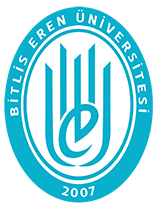| dc.contributor.author | PARALI, Levent | |
| dc.date.accessioned | 2025-08-18T12:14:47Z | |
| dc.date.available | 2025-08-18T12:14:47Z | |
| dc.date.issued | 2024 | |
| dc.identifier.issn | 2147-3129 | |
| dc.identifier.uri | http://dspace.beu.edu.tr:8080/xmlui/handle/123456789/15678 | |
| dc.description.abstract | In recent years, to provide power for wearable electronics, the mechanical energy obtained from environmental conditions through the piezoelectric nanogenerator into electricity has attracted interest. In this study, polyvinylidene fluoride (PVDF), lead zirconium titanate (PZT), and graphene nanoplatelets (GNP) based piezoelectric nanogenerators (PENs) were fabricated using electrospinning method. The experimental results evaluated using Thevenin’s, Norton’s, and the maximum power transfer theorems exhibited that the PVDF/PZT/GNP-based PEN had a 2.76 times greater electrical power efficiency (0.24 µW) at the resonance frequency of 20 Hz compared to that of the PEN based on the pure PVDF (0.09 µW) at the vibrational frequency of 25 Hz. The piezoelectric energy harvesters are highly suitable as selfpowered wearable motion sensors because of the direct relationship between the vibration frequency and the generated output power. | tr_TR |
| dc.language.iso | English | tr_TR |
| dc.publisher | Bitlis Eren Üniversitesi | tr_TR |
| dc.rights | info:eu-repo/semantics/openAccess | tr_TR |
| dc.subject | PVDF | tr_TR |
| dc.subject | PZT | tr_TR |
| dc.subject | Graphene | tr_TR |
| dc.subject | Electrospinning | tr_TR |
| dc.subject | Piezoelectric Nanogenerator Manufacturing | tr_TR |
| dc.subject | Energy Harvesting | tr_TR |
| dc.title | Design, Fabrication, and Piezoelectric Performance Evaluation of a Nanogenerator for Vibrational Energy Harvesters | tr_TR |
| dc.type | Article | tr_TR |
| dc.identifier.issue | 4 | tr_TR |
| dc.identifier.startpage | 896 | tr_TR |
| dc.identifier.endpage | 904 | tr_TR |
| dc.relation.journal | Bitlis Eren Üniversitesi Fen Bilimleri Dergisi | tr_TR |
| dc.identifier.volume | 13 | tr_TR |














